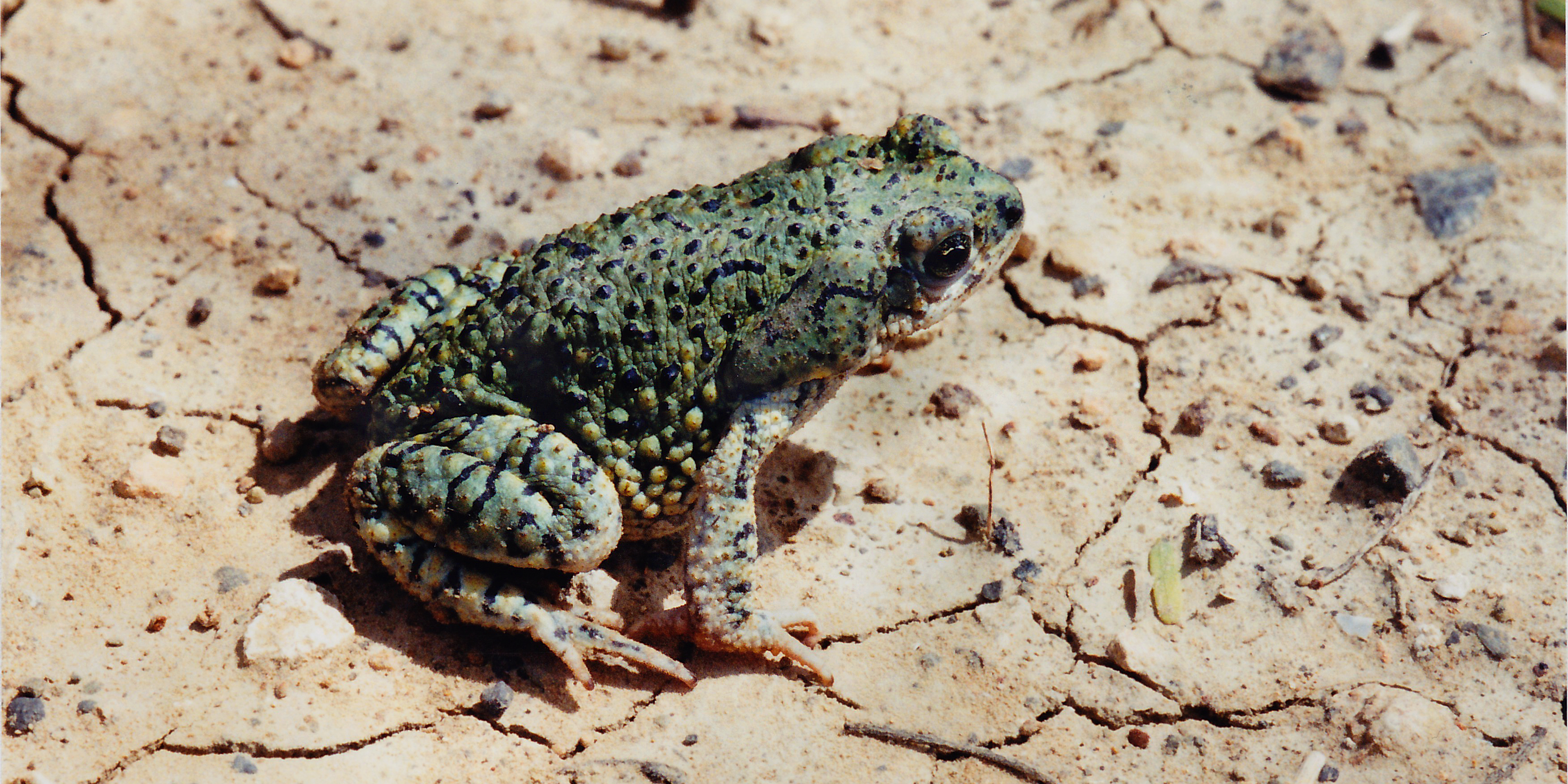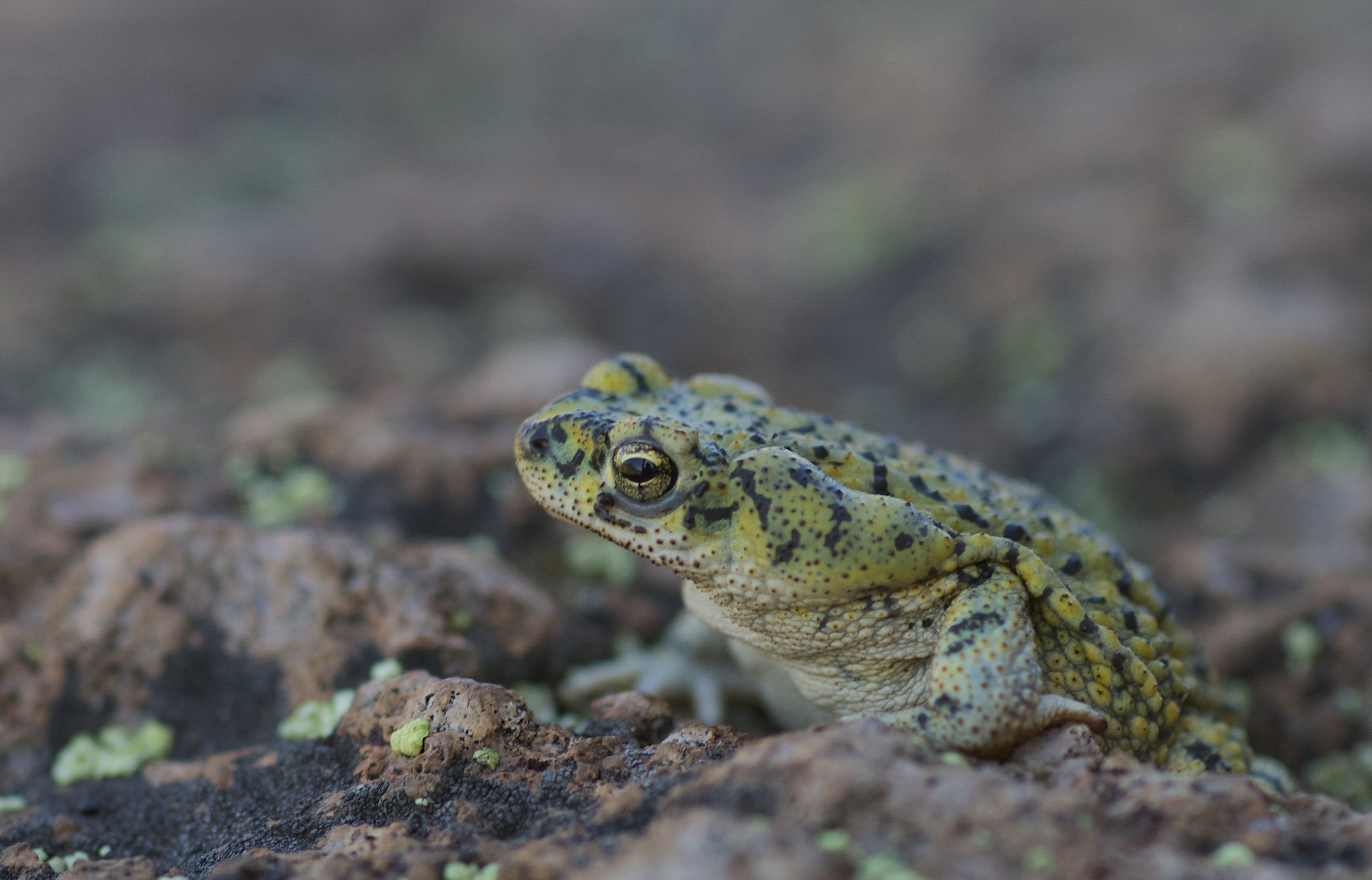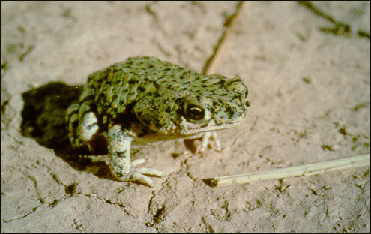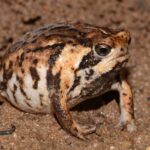- Introduction: Meet Anaxyrus debilis, the Little-known Jewel of North America's Arid Lands
- Taxonomy and Classification: Evolutionary Roots of a Hardy Amphibian
- Natural Habitat: Life in the Hidden Corners of the Desert Southwest
- Physical Characteristics: A Vivid Palette of Survival and Adaptation
- Behavior and Life Cycle: Dancing to the Desert Rain's Rhythm
- Ecological Role: Tiny Insect Hunters, Essential Indicators
- Threats and Conservation Status: Courage Under Pressure
- Cultural and Scientific Significance: A Symbol of Adaptability
- Conclusion: Celebrating the Resilience of America's Hidden Amphibian
Introduction: Meet Anaxyrus debilis, the Little-known Jewel of North America’s Arid Lands#
Hidden beneath summer’s scorching sunlight and sand-speckled sagebrush of the American Southwest lies a vibrant little creature often unnoticed by human eyes—Anaxyrus debilis, the North American Green Toad. Despite its diminutive size, rarely exceeding two inches, this hardy amphibian is a marvel of survival and adaptation, thriving in some of the driest and harshest environments the continent has to offer.
Known scientifically as Anaxyrus debilis, and previously classified within the genus Bufo, this charming amphibian captures interest with its vivid green coloration and intriguing life history. Though small, the species plays an essential ecological role, acting as both an efficient insect predator and a valuable indicator of environmental health. Yet, despite its importance and unique beauty, Anaxyrus debilis remains enigmatic to many wildlife enthusiasts and even seasoned naturalists.
Tucked within this tiny amphibian’s story is an extraordinary saga of survival amid adversity—one replete with surprising adaptations and fascinating behavioral traits. So let us journey into the lives of these charming yet resilient creatures, and unravel the mysteries surrounding North America’s unique green toad.
Taxonomy and Classification: Evolutionary Roots of a Hardy Amphibian#
Belonging to the amphibian family Bufonidae—commonly known as “true toads”—Anaxyrus debilis was once categorized under the vast genus Bufo. Modern genetic analyses, however, have reclassified this species within the genus Anaxyrus, a name derived from ancient Greek, meaning “king” or “leader”—fitting indeed, for a species ruling its harsh arid homelands through tenacity alone.
Within Anaxyrus, A. debilis stands distinctively divided into two recognized subspecies: the Eastern Green Toad (Anaxyrus debilis debilis) and the Western Green Toad (Anaxyrus debilis insidior). These subspecies differ slightly in coloration patterns and distribution, yet both share the overarching characteristics and adaptive behaviors that define the species as a whole.
Closely related to other arid-adapted toads such as Anaxyrus punctatus (the Red-spotted Toad) and Anaxyrus cognatus (the Great Plains Toad), Anaxyrus debilis exhibits fascinating evolutionary connections highlighting decades of adaptation in challenging ecosystems across southwestern North America.
Natural Habitat: Life in the Hidden Corners of the Desert Southwest#
From southern Colorado through regions of New Mexico, Texas, Arizona, and extending southward into the dry ecosystems of Mexico, this small amphibian remarkably carves out its niche among sand dunes, rocky hillsides, and semi-arid grasslands. It favors habitats characterized by sandy, permeable soils which allow efficient burrowing—critical for surviving the scorching temperatures and desiccation risks inherent in this region.
The green toad is remarkably adapted to its range’s semi-arid climates—inhabiting areas of sparse vegetation interspersed with juniper scrub, mesquite, yucca, and cacti. They often seek refuge beneath cover like fallen limbs, rocks, and crevices, emerging chiefly during periods of rainfall or humid evenings. Spring and summer rains trigger frenzied activity among these little amphibians, who eagerly emerge to replenish moisture in their delicate skins and pursue vital reproductive rituals.
This natural rhythm—fluttering energy following rare rains combined with patient dormancy—is key to understanding their unique ecological persistence. In landscapes where water is scarce and unpredictable, Anaxyrus debilis thrives precisely due to its remarkable physiological and behavioral ability to endure long periods of drought.
Physical Characteristics: A Vivid Palette of Survival and Adaptation#
A casual observer might marvel first at the strikingly vivid colors decorating Anaxyrus debilis. Bright green, olive, and yellowish hues form symmetrical blotches and spots across its skin. Often, dark-green blotches edged with black outline the toad’s back, a delightful arrangement reminiscent of intricate mosaics or ornate paintings. This vibrant coloration provides not only an aesthetic charm but a critical camouflage, blending seamlessly into mossy rocks, sparse foliage, and lichen-covered stones within their habitats.
Measuring rarely more than two inches long, Anaxyrus debilis stands among the smallest of North American toads. Their petite stature grants them advantageous concealment in their precarious, predator-rich habitats. The toad’s smooth skin—so different from the rugged and warty textures often associated with larger toads—helps conserve crucial moisture, preventing dehydration during extended dry spells.
Perhaps most impressive are the toad’s short, muscular hind legs, enabling quick hops and efficient burrowing into loose, sandy soil. Their resilient limbs effectively carve out small retreats beneath the surface, providing refuge from baking solar rays and sharp temperature fluctuations characteristic of the southwestern desert landscape.
Behavior and Life Cycle: Dancing to the Desert Rain’s Rhythm#
Perhaps Anaxyrus debilis’ greatest astonishment lies in the rhythmic cadence of its behavior—perfectly synchronized to the unpredictable rains of its environment. When the clouds release their precious cargo onto thirsty earth, these toads awaken from underground hideaways to set off lively choruses and energetic pursuits of mating and foraging.
Male green toads actively advertise readiness with melodic and high-pitch trills, echoing softly through the twilight desert landscapes. Soon, females arrive, lured irresistibly by these choruses. The ephemeral pools formed after rainfall become life-giving nurseries, chosen carefully by attentive females as they quickly deposit delicate strings of eggs wrapped protectively around aquatic vegetation.
The amphibian eggs hatch rapidly, often within days, given the transient nature of their aquatic birthplace. Resulting tadpoles mature swiftly, metamorphosing into miniature versions of their parents within just a few weeks—a vital adaptation encouraging survival before their transient ponds evaporate entirely. This accelerated life cycle is nature’s ingenious solution; synchronizing precisely with rainfall patterns ensures maximum success and continuity of resilience in volatile desert ecosystems.
Ecological Role: Tiny Insect Hunters, Essential Indicators#
As voracious insectivores, Anaxyrus debilis serves a vital ecological function in their fragile ecosystems. They effectively control populations of ants, beetles, small moths, and insects—providing critical balance within food webs. Simultaneously, their presence and health indicate environmental stability; as amphibians, their porous skin and reproductive reliance on water render them notably sensitive indicators of climate and environmental changes.
A population flourishing indicates healthy moisture patterns, stable temperatures, balanced insect populations, and minimal environmental contamination—insights invaluable to ecologists and conservationists alike.
Threats and Conservation Status: Courage Under Pressure#
Presently categorized by the IUCN Red List as a species of Least Concern, Anaxyrus debilis currently faces no imminent widespread threat. Nonetheless, certain regional populations show vulnerability due to ongoing habitat alteration and loss. Urbanization, land degradation from agriculture, pesticide exposure, and climate change-induced drought conditions pose long-term threats. Protecting habitat integrity, controlling chemical contaminants, and strategically managing water resources in drought-prone desert areas remains paramount to safeguard these amphibian jewels’ future.
Cultural and Scientific Significance: A Symbol of Adaptability#
Within southwestern indigenous cultures, amphibians like Anaxyrus debilis represent the delicate connection between water, earth, and survival. Toad motifs in artwork, pottery, and storytelling reflect deep respect and reverence, symbolizing fertility, renewal, and adaptability.
Scientifically, studying Anaxyrus debilis provides invaluable insights into drought-resistance adaptations, climate resilience, and ecosystem indicators—information increasingly critical in our rapidly changing world.
Conclusion: Celebrating the Resilience of America’s Hidden Amphibian#
Though small and secretive, the remarkable Anaxyrus debilis embodies nature’s endless resourcefulness and resilience. Understanding and conserving these charming creatures deepens our connection to the wilderness around us, reminding us continually of the delicate balance on which amphibian life depends.
Let our awareness inspire meaningful stewardship. Whether supporting habitat protection, educating fellow nature enthusiasts, or influencing policy-driven conservation, we all possess the opportunity to ensure Anaxyrus debilis prospers for countless generations to admire and cherish.















